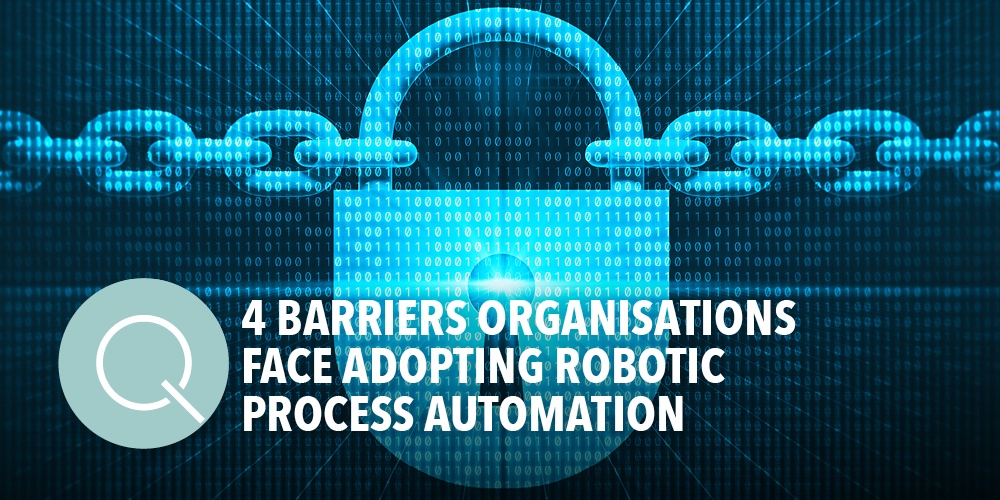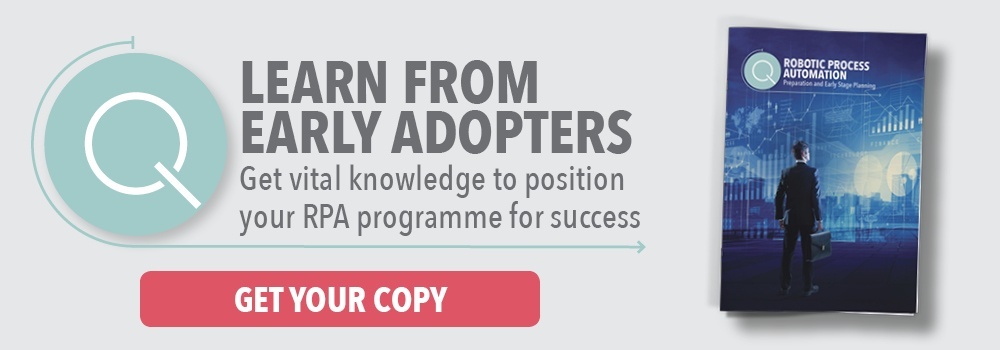
When assessing and considering Robotic Process Automation organisations will face a range of internal barriers which can directly affect the adoption process. This week we discuss four barriers which we see commonly arising in New Zealand businesses.
It should not go un-noted that many of the barriers which arise in during assessment and consideration are the result of the combination of risks identified by research by the London School of Economics or the adverse effect of RPA myths.
The intent, therefore, is to show the real business impact these factors are having on organisation who are assessing and considering RPA and also to provide guidance on where organisations may wish to prioritise focus and effort to avoid these challenges. We also discuss this topic extensively in our guide to early stage planning and implementation.
Logic suggests that organisations will face a full range of barriers, necessarily large and small. The four which we discuss are, internal stakeholder and governance processes, making the business case stack, gaining organisational buy-in and not having enough processes to automate are the most common.
These are based on our observations working with multiple organisations in the New Zealand market.
1. Gaining Organisational Engagement and Buy-In.
When speaking to clients, many of them have expressed the biggest frustration is selling RPA to the broader organisation.

RPA is typically initiated by a person, or key people in the organisation who are familiar with the concept and sees its value, but who needs to drive and sell the capability to the broader internal community before the business case can progress.
Any time you implement an innovative technology platform, there is an element of change management concerning the alignment of people and processes to the technology stack.
You will always have a mix of people in the organisation. Those who embrace change and run along with it, those who take a little time warming up to things but eventually get on board, and of course, those who refuse to accept it and hold the process back altogether or slow it down terribly. Either way, most of our partners to date have expressed that managing this is one of the biggest challenges.
The opportunity for organisations who implement RPA is to invest the time, effort and resources into areas that support this change including project management, change management, communication and governance.
The change management and communication strategies need to be incorporated into the overall project plan, and it must be designed in a way to get the correct message to all staff on all levels.
Companies who have been hugely successful in RPA implementations have planned and managed these functions well.
The message from global learnings and local learnings is simple (or at least easier said); Get your people on board, engage your teams in the journey and let them see the benefits. Taking this course of action will increase the likelihood that the programme will succeed.
2. Internal Stakeholder and Governance Processes.
One of the critical benefits of Robotic Process Automation is the potential for rapid implementation alongside the transformative qualities.
Organisations have a desire to leverage the level and rate of transformation that RPA could drive, however,
Adoption is being constrained by the internal environments of the very organisations which want the transformation.

Part of the challenge, particularly in large enterprises is the sheer volume of stakeholders that must be engaged. It is to be expected that this would include senior leadership within the organisation and governance structures, for example, steering committees, but it is often the broader stakeholders that can have a more significant impact, for example, navigating procurement, legal, information security and commercial requirements.
An RPA programme is no small undertaking. It is still a relatively innovative technology. Lower levels of stakeholder education and awareness play a factor in this challenge. In RPA Myths, we discussed one of the misconceptions which is that RPA is cheap (which it can be considered relative to other technology programmes) but it is still an investment; Delegated financial authorities and internal sign-offs also play a significant role.
Most significantly RPA is a business programme that deals with business processes, often customer information, can affect regulatory and compliance requirements and more. By engaging these areas, they all become stakeholders.
The intent is not to suggest that business should not engage given people, or that any process is unwarranted. It is our observation, however, that one of the reasons companies are attracted to RPA is that it offers them a capability that can drive transformation and enable agility, yet their environment constrains their ability to achieve this.
Any person preparing to champion RPA must be aware of this, but the potential could be for an organisation to assess not only if they want RPA, but how they might approach the implementation differently to minimise this barrier.
3. Making the Business Case Stack
In the guide to early stage planning and implementation we discuss a wider range of factors which play directly into this barrier.
First, RPA is an investment, usually a non-insignificant investment once organisations start to consider the broader costs of resourcing and transformation. Second, discussed in myths, RPA is not a silver bullet that will magically solve all of organisations problems, which is usually clear by the time an organisation reaches the business case stage and third, the scales of economy are very different for New Zealand organisations and lastly benefits measurement is not always clear-cut or convertible into a financial metric, which tends to be the preferred ‘language’ of return on investment.
Organisations are making commercial decisions based on risk, investment requirements and potential return. The challenge for champions is creating a strong business case that meets the investment requirements of an organisation.
The two active pieces of guidance that we would offer is to ensure substantial alignment between the proposed RPA programme and the organisations overarching strategy.
Select benefits that show clear alignment between RPA outcomes and strategic drivers.
Lastly focus on RPA benefits that can be converted into a financial measure such as the combination of hours returned to the business and an average cost of labour.
4. We Don't Have Enough Processes to Automation.
One of the frequent conversations we are having with potential partners is around achieving robot utilisation and the perception of the number of processes they could automate.
Our observation is that usually, organisations do not necessarily realise the number of processes different teams complete within their business or their perception of processes within the business that could be automated using RPA is limited.
The processes that come to top of mind are usually the ones that are causing a team of the organisation the most significant issues, expose the business to the highest risk or are associated with revenue generation.
There are two factors at play in this case. The first is an understanding of the number of processes within a business and the second is an understanding of the suitability of those processes to automation.
Organisations tend to have varying levels of process maturity overall and from function to function. Additionally, even a mature well documented process, may not be suitable for automation. Taking these aspects into consideration, while existing process documentation is helpful, we place less reliance on it.
Most RPA providers will offer some form of opportunity qualification process. The basis of the process is to provide primary education to the business on what processes are suitable for automation, give some guidance on the number of processes in an organisation which could be automated and identify an initial sample or processes ideal for automation.
In addition to overcoming the barrier, this approach also helps organisations identify potential proof of concept or pilot processes as well as pre-determining an initial pipeline for automation.
We also recommend that as an output of this process there is an estimate of the level of potential automation benefit which could be derived from the initial sample, which will be based on initial suggestions of benefit metrics which could be suited to the organisation. This process directly supports the business case.

In summary, just as RPA itself is a journey, the road to adoption is a journey in its own right. People should expect a range of barriers, both large and small.
Four of the most common we think organisations will face are: internal stakeholder and governance processes, making the business case stack, gaining organisational buy-in and not having enough processes to automate are the most common.
Some of these may take some effort to move through, but none should be considered insurmountable.



